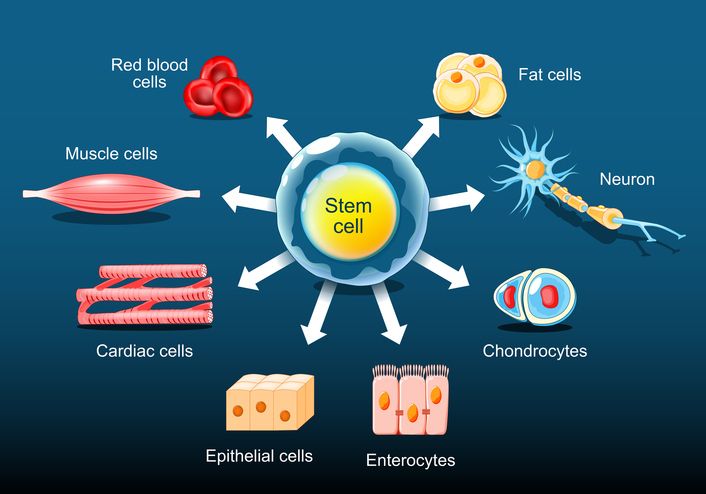
Author: Natalie Ng|Updated: 23 May 2025
To lose subcutaneous fat, it’s all about small, steady changes. You’ll want to eat a little less, about 500 calories less each day, making sure you’re getting enough protein with every meal. A few HIIT workouts a week, drinking plenty of water, and getting good sleep all help too. The way your body stores fat, whether it’s subcutaneous fat or visceral fat, depends on a lot of things— from how much you eat, to how you move and even how you sleep. Too much fat around your belly or your organs can lead to health problems like high blood pressure, insulin resistance, or fatty liver disease. So keeping an eye on your body weight, waist size, and overall body fat is worth it. If you’re looking to lose subcutaneous fat and feel healthier, these habits can make a real difference. Let’s take a closer look at what works.

Lifestyle Habit 1 : Create a Caloric Deficit

Eating fewer calories helps your body burn stored fat
To lose subcutaneous fat, you need to burn more calories than you eat. This is called a caloric deficit. It helps your body tap into fat stores for energy, including the excess subcutaneous fat and visceral belly fat that can raise your risk of health problems like high blood pressure and insulin resistance.
A small, steady deficit works best. If you cut too many calories at once, you might feel tired, lose muscle mass, and slow down your metabolism. Aim to reduce your daily intake by around 500 calories. This helps you lose weight safely and keeps your body fat percentage moving in the right direction.
Track your eating habits to find the right calorie target
Start by tracking your usual food intake for a few days. Apps like MyFitnessPal or a simple food journal can help. Once you know how much you typically eat, lower that amount by 500 calories a day. This approach helps you avoid eating too many calories and keeps your energy levels steady.
A slow and steady approach supports fat loss
A safe and healthy weight loss target is about 1 to 2 pounds per week. This pace allows your body to adjust without losing muscle mass. By combining a balanced diet with regular physical activity, you can reduce belly fat, improve body composition, and manage body weight in the long run.

Lifestyle Habit 2: Choose High-Quality Protein to Lose Subcutaneous Fat
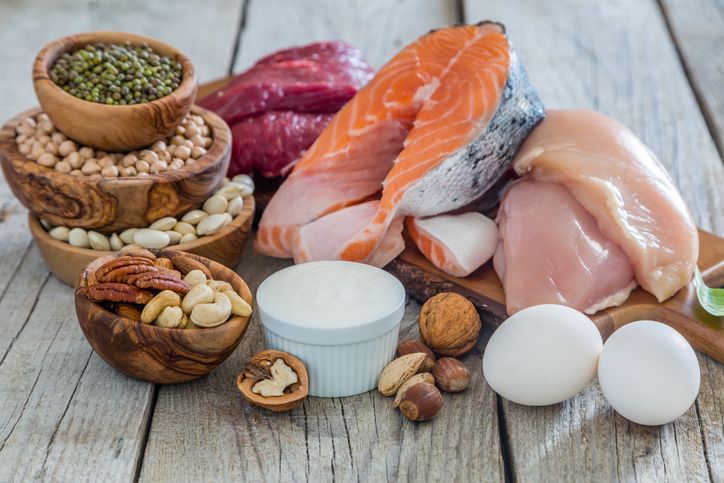
Complete proteins support muscle mass and fat loss
When you’re trying to lose subcutaneous fat, eating enough high-quality protein is essential. Protein helps your body build and maintain muscle mass, which supports a healthy body composition and burns more calories, even at rest. Including a variety of complete protein sources like chicken breast, turkey, lean beef, eggs, salmon, tuna, cod, and mackerel gives your body the amino acids it needs to repair and grow muscle tissue.
For plant-based options, combine foods like quinoa with beans or rice with lentils to create complete protein meals. Other great choices include tempeh, tofu, edamame, and miso.
Protein timing helps your body burn calories
Spreading your protein intake throughout the day supports muscle maintenance and fat burning. Aiming for 25 to 30 grams of protein per meal is a good target. Eat your first protein-rich meal within 30 minutes of waking up to kickstart your metabolism. After resistance training or high intensity interval training, have a post-workout meal with lean protein and a small portion of complex carbs to support muscle recovery and reduce belly fat.
Regular protein intake supports healthy body fat levels
By focusing on complete proteins at every meal, you help your body reduce excess fat, including stubborn belly fat, while holding onto lean muscle. This balance is important when you’re trying to lose weight and manage body fat percentage without risking muscle loss or health problems like insulin resistance.
Read More
Book Now to Experience
S6 Body Sculpting Treatment
1 Minute Self-Registration
Date should not be before minimal date

Lifestyle Habit 3: Do High-Intensity Interval Training (HIIT) to Burn Subcutaneous Fat

HIIT helps your body burn more calories
High-Intensity Interval Training (HIIT) is one of the most effective ways to burn subcutaneous fat and support healthy weight management. HIIT combines short bursts of intense effort with periods of rest or light activity. This type of training pushes your body to work harder, increasing calorie burn during the workout and for hours after it ends.
By incorporating HIIT into your routine, you can help your body reduce belly fat and visceral belly fat, lower your risk of health problems like high blood pressure, and improve body composition.
A simple HIIT workout for fat loss
To get started, try this easy format:
• Sprint at 80 to 90% effort for 30 seconds
• Recover with a light walk for 60 seconds
• Repeat for 15 to 20 minutes
This method works for various cardio exercises like cycling, swimming, or rowing. The key is to push yourself during the work intervals and stay consistent.
Plan HIIT sessions 2-3 times per week
For best results, aim for 2 to 3 HIIT workouts each week. This frequency gives your body time to recover and helps you build muscle mass while losing subcutaneous fat. Combined with a healthy diet, HIIT supports fat burning, boosts your metabolism, and helps lower your body fat percentage over time.

Lifestyle Habit 4: Get Enough Sleep to Support Fat Loss

Sleep helps your body burn fat more efficiently
Getting 7 to 9 hours of sleep each night is essential when you’re working to lose subcutaneous fat. Sleep affects your hormones, metabolism, and how your body stores fat. Without enough rest, your body may produce more cortisol, a stress hormone that encourages fat storage, especially around the belly. Too little sleep can also increase insulin resistance, making it harder to manage body fat and keep a healthy weight.
Quality sleep helps your body recover from workouts, build muscle mass, and manage body fat percentage. It also plays a role in reducing the risk of health problems like high blood pressure, fatty liver disease, and sleep apnea.
Poor sleep habits can slow your progress
Lack of sleep can lead to more cravings, overeating, and a higher risk of gaining weight. It can also make you feel too tired for regular physical activity, which affects how many calories you burn. To improve your sleep quality, aim for a regular bedtime routine, turn off screens at least an hour before bed, and create a dark, cool, quiet sleep environment.
Good sleep supports your fat-burning goals
By making sleep a priority, you give your body the time it needs to recover, manage fat storage, and burn calories efficiently. This supports your efforts to reduce belly fat, manage body weight, and improve your overall health.
Book Now to Experience
S6 Body Sculpting Treatment
1 Minute Self-Registration
Date should not be before minimal date

Lifestyle Habit 5: Stay Hydrated to Help Burn Subcutaneous Fat
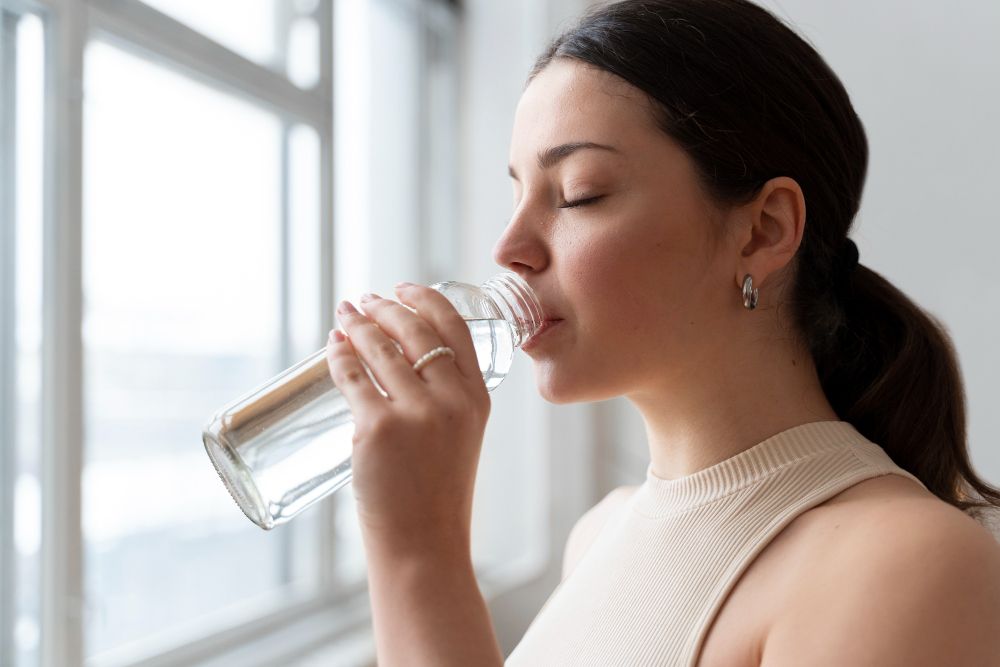
Water helps your body process fat
Staying hydrated is essential when you’re working to lose subcutaneous fat. Your body needs water to break down fat, transport fatty acids, and support digestion. When you’re not drinking enough, your body can struggle to process calories efficiently, which makes it harder to lose weight and reduce belly fat.
Drinking water also helps manage cravings. Sometimes, thirst can feel like hunger, which leads to unnecessary snacking and a higher intake of calories. Staying hydrated can help you feel fuller and avoid overeating, supporting your fat-burning goals.
Hydration supports energy and metabolism
Water plays a role in regulating body temperature, keeping your energy levels steady, and supporting muscle function during physical activity. When you’re well-hydrated, your body is better able to burn calories during exercise, whether it’s resistance training, high intensity interval training, or simple daily movement.
Tips for staying hydrated throughout the day
To support fat loss and healthy weight management, aim for at least 8 to 10 glasses of water per day. Sip water consistently rather than drinking large amounts all at once. If plain water feels boring, try adding lemon slices or herbs like mint for flavor.
Replace sugary drinks with water, unsweetened tea, or low fat dairy options. Keeping your hydration levels steady can support your efforts to burn calories, manage body fat, and reduce your risk of health problems like high blood pressure and kidney disease.

Lifestyle Habit 6: Build Lean Muscle Through Strength Training

Strength training helps you burn more calories
Resistance training is one of the most effective ways to lose subcutaneous fat and improve body composition. When you build muscle, your body burns more calories throughout the day, even when you’re resting. This makes it easier to lose belly fat and manage your overall body fat percentage.
Strength training also supports your abdominal muscles, helps shape your body, and makes it easier to maintain a healthy weight over time. It’s a key part of reducing excess fat and keeping your metabolism active.
Focus on compound exercises for fat loss
Compound exercises work multiple muscle groups at the same time, helping you burn more calories and build muscle mass. Some of the best moves for fat loss include squats, lunges, deadlifts, push-ups, and rows. These exercises target large muscle groups, making them more effective for burning fat and improving body shape.
Here’s a basic strength training routine to start with:
Exercise | Sets x Reps | Rest
Squats | 3 x 12 | 60 seconds
Push-ups | 3 x 15 | 45 seconds
Planks | 3 x 30 seconds | 30 seconds
Train regularly to support fat loss
Aim for 2 to 3 strength training sessions per week. This frequency helps you build muscle, support fat-burning processes, and reduce subcutaneous fat. As you get stronger, gradually increase the weights or resistance to challenge your muscles and avoid plateaus.
Building lean muscle is one of the most effective ways to improve your body composition, reduce visceral fat, and support long-term fat loss.
Book Now to Experience
S6 Body Sculpting Treatment
1 Minute Self-Registration
Date should not be before minimal date

Lifestyle Habit 7: Time Your Meals to Support Fat Loss
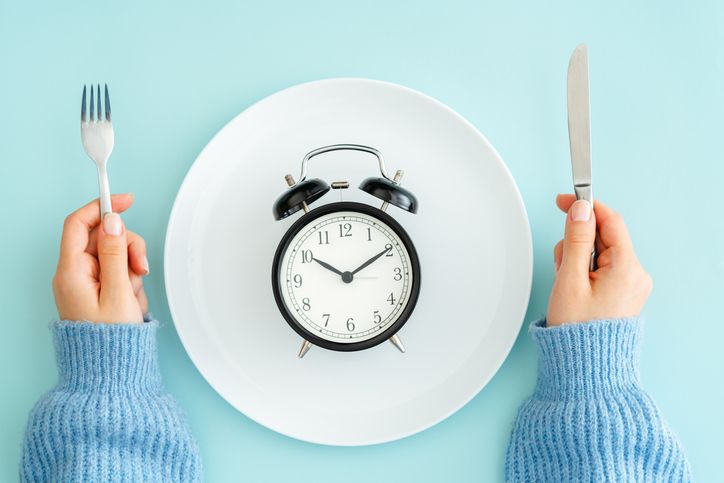
Eating at regular times helps your body burn fat
When you’re trying to lose subcutaneous fat, when you eat is just as important as what you eat. Spacing your meals throughout the day helps keep your metabolism steady and prevents energy crashes that can lead to cravings and overeating. Skipping meals or eating too close to bedtime can make it harder for your body to manage fat storage, which may raise the risk of gaining weight or developing insulin resistance.
Start your day with protein to kickstart fat burning
Eating a protein-rich meal within 30 minutes of waking up can help your body burn calories more efficiently throughout the day. It also supports muscle mass and keeps you feeling full, which is important when you’re working to reduce belly fat and lower your body fat percentage.
Eat your largest meal after a workout
Plan your biggest meal within two hours after resistance training or high intensity interval training. This is when your body needs nutrients to recover, rebuild muscle, and support fat-burning processes. Including lean protein, healthy fats, and complex carbs in this meal helps support fat loss and maintain a healthy body weight.
Space your meals to manage fat storage
Try to space your meals 3 to 4 hours apart. This helps keep your blood sugar stable, supports digestion, and prevents excessive fat storage. Stop eating about 3 hours before bed to give your body time to process food and avoid storing extra calories as belly fat.

Lifestyle Habit 8: Choose Whole, Nutrient-Dense Foods for Fat Loss

Whole foods help your body burn subcutaneous fat
Choosing whole, nutrient-dense foods is one of the most effective ways to reduce subcutaneous fat. These foods are packed with vitamins, minerals, and fiber that support fat metabolism and help your body maintain a healthy weight. When you focus on unprocessed options, you give your body the nutrients it needs without extra calories that can lead to excess fat storage.
Add root vegetables for fiber and steady energy
Root vegetables like sweet potatoes, turnips, and parsnips are rich in fiber and slow-digesting carbs. They help you feel full longer, reduce cravings, and support your body’s natural fat-burning processes.
Use herbs and spices to support fat metabolism
Herbs like parsley, cilantro, basil, and dill add flavor and nutrients to meals without extra calories. Spices like turmeric, ginger, cinnamon, and black pepper have anti-inflammatory properties that support fat metabolism and may help reduce excess fat.
Include fermented foods for gut health
Fermented foods such as sauerkraut, kimchi, kefir, and plain yogurt support digestion and gut health. A healthy gut helps your body process food better, which can play a role in managing body fat and improving body composition.
Add mushrooms and seaweed for extra nutrients
Mushrooms like shiitake, oyster, maitake, and portobello are low in calories and rich in vitamins that support fat metabolism. Seaweed provides iodine, which helps regulate thyroid function—a key player in fat burning and energy balance.
Choosing whole, nutrient-dense foods helps you lose subcutaneous fat, maintain muscle mass, and reduce your risk of health problems like insulin resistance, high blood pressure, and fatty liver disease.
Book Now to Experience
S6 Body Sculpting Treatment
1 Minute Self-Registration
Date should not be before minimal date

Lifestyle Habit 9: Build a Regular Exercise Routine to Support Fat Loss

Regular exercise helps burn subcutaneous fat
A regular exercise routine is key for losing subcutaneous fat and keeping it off long term. When you exercise regularly, your body becomes more efficient at using stored fat for energy, instead of holding onto it. This helps reduce excess subcutaneous fat and visceral fat that can raise your risk of heart disease, high blood pressure, and insulin resistance.
Exercise also helps maintain muscle mass, which supports a healthy metabolism and body fat percentage. The more muscle you have, the more calories you burn, even when resting.
A simple weekly plan to get started
Aim for 3 to 4 workouts each week, combining strength training and cardio. Try 30 to 45 minutes per session, focusing on movements that target multiple muscle groups like squats, push-ups, lunges, and planks.
Pick a time that fits your schedule—whether it’s in the morning before work or in the evening. Staying consistent with your workout time helps build a habit that’s easier to stick with.
Consistency is more important than intensity
It’s better to exercise regularly at a moderate level than to go all out once in a while and burn out. Even a brisk walk, a bodyweight circuit, or a quick session of high intensity interval training can help you burn calories and manage belly fat. Over time, these habits improve body composition and lower the risk of developing health problems like fatty liver disease and sleep apnea.

Health Risks of Excess Subcutaneous Fat and Why It’s Important to Reduce It

Subcutaneous fat and its impact on health
Excess subcutaneous fat builds up under the skin over time. While it might seem harmless, this extra layer of fat can affect your body in many ways. It can lead to insulin resistance, making it harder for your body to process sugar. It increases the risk of high blood pressure and contributes to belly fat that often surrounds vital abdominal organs.
When too much subcutaneous fat builds up, it raises the risk of fatty liver disease and makes it harder to maintain a healthy body fat percentage. This can also lead to sleep apnea and other conditions linked to excess fat.
Reducing subcutaneous fat supports long-term health
Lowering subcutaneous fat helps improve body composition, supports muscle mass, and can help you reach a healthy weight. It reduces the risk of developing abdominal obesity, high blood pressure, and other health problems that come from storing too much fat.
By focusing on a healthy diet, regular physical activity, and targeted treatments like S6 Body Sculpting Treatment, you can take control of your body shape and health. These steps can help manage excess subcutaneous fat and improve your energy, confidence, and overall well-being.
Book Now to Experience
S6 Body Sculpting Treatment
1 Minute Self-Registration
Date should not be before minimal date

S6 Body Sculpting Treatment for Reducing Subcutaneous Fat and Shaping the Body
S6 Body Sculpting Treatment is a non-invasive therapy designed to help you lose subcutaneous fat in targeted areas of the body. This treatment uses a combination of low-energy bio-laser technology and vacuum suction massage to break down fat cells, boost metabolism, and improve skin firmness. By working directly on stubborn fat deposits, S6 helps you reduce excess fat in areas like the belly, arms, thighs, and back—areas where diet and exercise alone may not be enough. To track changes in visceral fat and monitor your progress, you can use a tape measure to consistently measure your waist circumference before and after treatment.
S6 supports your fat loss efforts by enhancing your body’s natural fat-burning processes. It works alongside healthy habits like resistance training, high intensity interval training, and a balanced diet to help you achieve a healthier body fat percentage, reduce belly fat, and improve body composition.
How S6 Body Sculpting Treatment Works
• The therapist begins with a detailed body shape and fat distribution analysis to customize your treatment plan.
• A low-energy bio-laser is applied to the treatment areas, penetrating the skin and targeting subcutaneous fat cells.
• The laser energy breaks down fat cells, releasing fatty acids that are drained through the lymphatic system.
• Vacuum suction massage helps boost blood flow, increase metabolism, and support the removal of fatty acids.
• The treatment also stimulates collagen production, helping to firm the skin and prevent sagging as fat is lost.
Benefits of S6 Body Sculpting Treatment
• Non-invasive: No surgery, no needles, no medications, and no downtime required.
• Targets stubborn fat areas: Helps reduce fat in the belly, waist, arms, thighs, back, calves, and lower buttocks
• Supports fat metabolism: Helps your body break down and remove excess fat more efficiently.
• Tightens skin: Encourages collagen production to keep skin firm after fat loss.
• Safe for most body types: The treatment is gentle and designed for those looking to lose subcutaneous fat in specific areas.
Enhance Your Fat Loss Results with S6
S6 Body Sculpting Treatment is a great addition to your fat-burning routine. When combined with a healthy lifestyle, S6 can help you achieve better results by targeting stubborn fat areas and supporting your body’s fat metabolism.
Ready to take the next step? Book your S6 Body Sculpting Treatment today and start your journey to losing subcutaneous fat and achieving a more sculpted, confident body.
New Beauty's S6 Body Sculpting Treatment
Maintaining Fat Loss After Reaching Your Goal
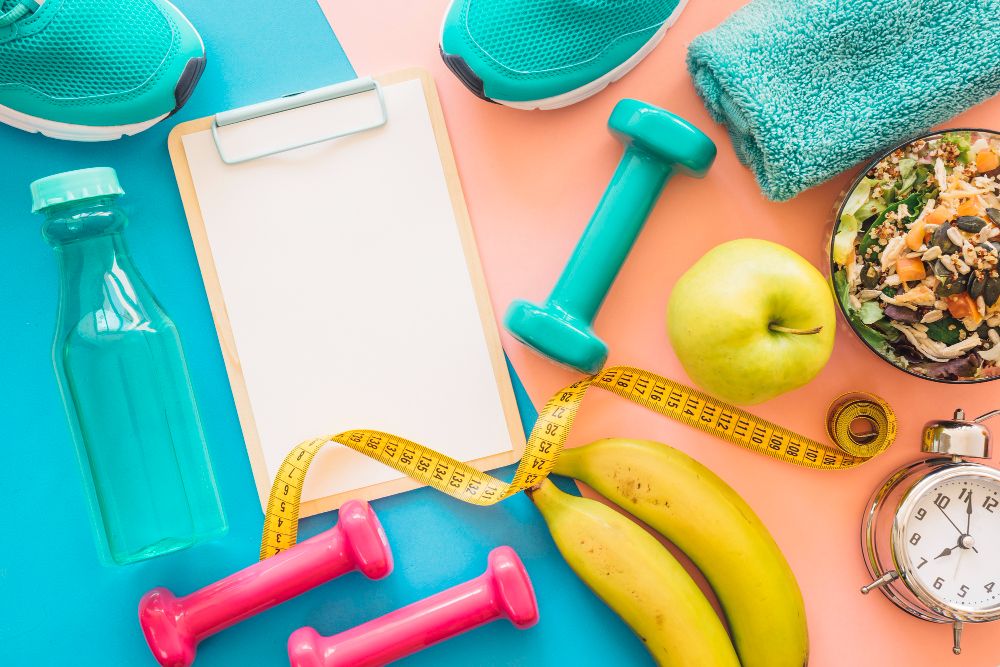
Keep subcutaneous fat off with smart lifestyle habits
Losing subcutaneous fat is only part of the journey. Keeping it off requires regular habits that support a healthy body shape and prevent fat regain. Once you reach your fat loss goal, focus on long-term strategies like:
• Continuing regular physical activity, including strength training and high intensity interval training
• Sticking to a balanced diet rich in lean proteins, whole grains, and vegetables, while limiting trans fats and high fructose corn syrup
• Getting enough sleep each night to regulate hormones that affect fat storage
• Managing stress through breathing techniques, light walks, or hobbies to prevent cortisol spikes that promote belly fat
• Staying hydrated to support metabolism and prevent unnecessary snacking
These habits help you avoid gaining weight again and keep your body fat percentage in a healthy range. Remember, subcutaneous fat can return if old habits creep back in, so long-term consistency is key to maintaining a leaner, healthier body.
Book Now to Experience
S6 Body Sculpting Treatment
1 Minute Self-Registration
Date should not be before minimal date
FAQ
Can I lose subcutaneous fat without losing muscle mass?
Yes, you can lose subcutaneous fat without sacrificing muscle mass by following a balanced approach. Focus on eating enough protein at each meal, include strength training in your routine, and avoid extreme calorie deficits. These habits help your body use fat as energy while preserving lean muscle mass. Aiming for a gradual fat loss of 1–2 pounds per week is ideal for maintaining muscle.
What is the difference between subcutaneous fat and visceral fat?
Subcutaneous fat is stored just under the skin, while visceral fat surrounds your internal organs. Visceral fat is more harmful to health, as it raises the risk of heart disease, high blood pressure, and insulin resistance. Subcutaneous fat, while less dangerous, can still affect your body shape, waist size, and overall body fat percentage.
Does too much subcutaneous fat lead to health problems?
While subcutaneous fat is not as harmful as visceral fat, having too much can still cause issues. It can lead to higher body mass index, increased risk of developing insulin resistance, fatty liver disease, and sleep apnea. Excess fat also makes it harder to maintain a healthy weight and can raise the risk of health problems like high blood pressure and metabolic syndrome.
Can diet alone help me lose subcutaneous fat, or do I need exercise?
Diet plays a big role in losing subcutaneous fat, but combining a healthy eating plan with regular physical activity is the most effective approach. A diet that supports fat loss includes whole grains, lean proteins, and low fat dairy while avoiding trans fats and high fructose corn syrup. Adding resistance training and high intensity interval training helps burn calories, boost metabolism, and support long-term fat loss.
Is it possible to reduce fat in specific body parts, like belly fat or thigh fat?
While spot reduction is a common goal, the body loses fat in a more general pattern, not just in specific areas. However, treatments like S6 Body Sculpting Treatment can help target stubborn fat in specific areas, like the belly, thighs, and arms. Combining targeted treatments with a balanced diet and regular exercise can support fat loss in these areas over time.
Recommended Articles
COPYRIGHT© NEW BEAUTY MANAGEMENT LIMITED 2025. ALL RIGHT RESERVED.


